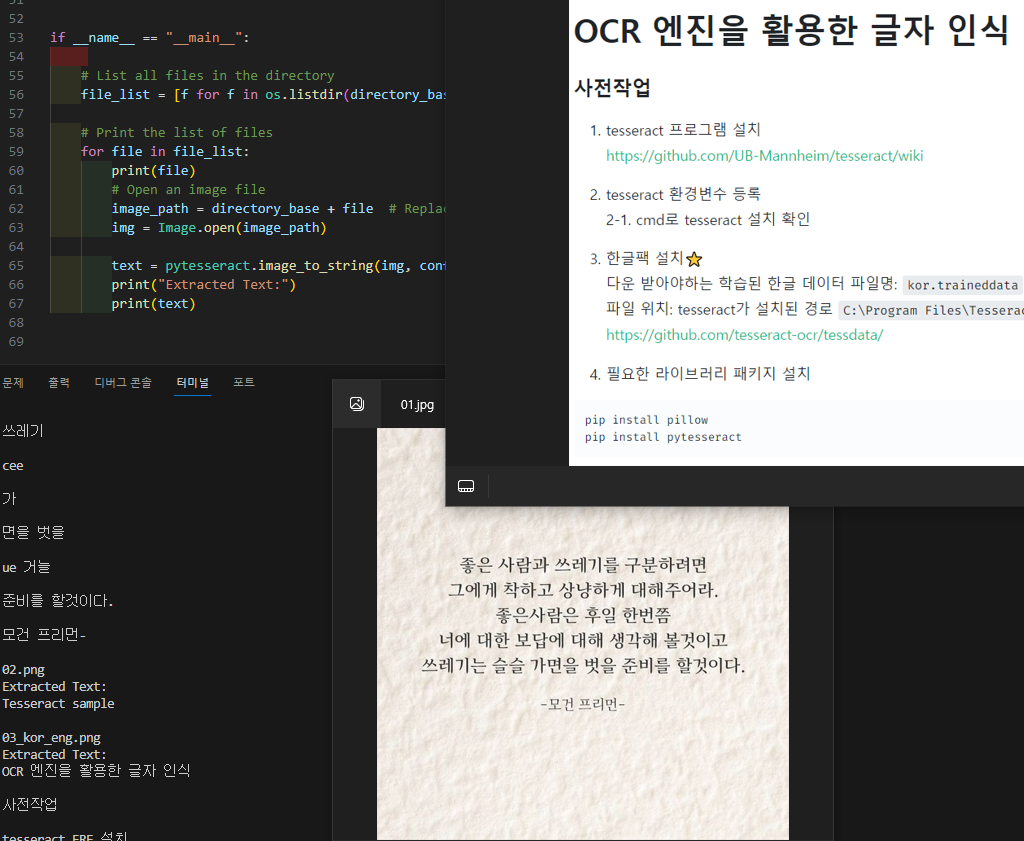입력된 웹 페이지 내에서 모든 <img> 요소를 추출하는 프로그램을 **requests**와 BeautifulSoup 라이브러리를 사용하여 구현해 드리겠습니다. 🔎
이 방법은 웹 크롤링(Web Crawling)의 가장 기본적인 형태이며, HTML을 파싱(Parsing)하여 원하는 특정 태그를 쉽게 찾아낼 수 있습니다.
_image_resource_extract.py
import requests
from bs4 import BeautifulSoup
from urllib.parse import urljoin, urlparse
import sys
def extract_images_from_url(url):
"""
주어진 URL의 웹 페이지에서 모든 <img> 태그의 src 속성을 추출합니다.
:param url: 분석할 웹 페이지의 URL
:return: 이미지 URL 리스트
"""
if not (url.startswith('http://') or url.startswith('https://')):
# 사용자가 프로토콜을 생략했을 경우 https://를 기본으로 추가
url = 'https://' + url
image_list = []
print(f"URL에 접속 중: {url}")
try:
# 1. HTTP 요청 보내기
# User-Agent를 설정하여 봇 접근이 아님을 알리고 접속 거부를 방지합니다.
headers = {
'User-Agent': 'Mozilla/5.0 (Windows NT 10.0; Win64; x64) AppleWebKit/537.36 (KHTML, like Gecko) Chrome/91.0.4472.124 Safari/537.36'
}
response = requests.get(url, headers=headers, timeout=10)
response.raise_for_status() # HTTP 오류가 발생하면 예외 발생
# 2. HTML 파싱 (BeautifulSoup 사용)
soup = BeautifulSoup(response.text, 'html.parser')
# 3. 모든 <img> 태그 찾기
img_tags = soup.find_all('img')
# 4. 각 태그에서 src 속성 추출
for img in img_tags:
src = img.get('src')
if src:
# 5. 상대 경로를 절대 경로로 변환
# <img src="/images/logo.png">와 같은 상대 경로를 처리하기 위해 필요합니다.
absolute_url = urljoin(url, src)
image_list.append(absolute_url)
except requests.exceptions.RequestException as e:
print(f"\n[오류] 웹 페이지에 접속할 수 없습니다: {e}")
return None
except Exception as e:
print(f"\n[오류] 예상치 못한 오류가 발생했습니다: {e}")
return None
return image_list
if __name__ == "__main__":
# 1. 사용자로부터 URL 입력 받기
target_url = input("이미지 리스트를 추출할 웹 페이지 URL을 입력하세요 (예: google.com): ").strip()
if not target_url:
print("URL이 입력되지 않았습니다. 프로그램을 종료합니다.")
sys.exit()
# 2. 이미지 추출 실행
images = extract_images_from_url(target_url)
# 3. 결과 출력
print("\n" + "="*50)
if images is not None:
print(f"📌 발견된 이미지 요소 개수: {len(images)}개")
print("--- 추출된 이미지 URL 리스트 ---")
# 최대 10개만 출력 (너무 길어지는 것을 방지)
for i, img_url in enumerate(images[:10]):
print(f"{i+1}. {img_url}")
if len(images) > 10:
print(f"...\n(총 {len(images)}개의 이미지 URL이 발견되었습니다.)")
print("="*50)'프로그래밍 > Python' 카테고리의 다른 글
| [python] YouTube 또는 기타 지원되는 웹사이트의 영상 URL에 대해 **사용 가능한 모든 다운로드 형식(Format)**의 목록을 세부 정보와 함께 출력하는 데 사용 (0) | 2025.11.24 |
|---|---|
| [python] 유튜브 영상 경로로 다운받기 youtube_downloader.py (0) | 2025.11.24 |
| [python] random walk artistic noise trail (1) | 2025.11.13 |
| [python] turtle F11 Draw (0) | 2025.11.12 |
| [python] asciichartpy - 터미널(콘솔) 환경에 깔끔하고 읽기 쉬운 텍스트 기반의 ASCII 아트 그래프를 그려주는 라이브러리 (0) | 2025.10.22 |




